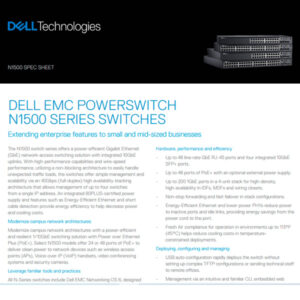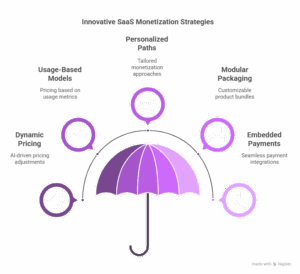In today’s rapidly evolving digital landscape, tracking the right metrics is crucial for maximizing the effectiveness of your AI-driven advertising campaigns. Understanding the top 15 key performance indicators (KPIs) can help you harness the full potential of artificial intelligence to drive better results. From engagement rates and conversion metrics to cost-per-click and return on ad spend, these metrics provide valuable insights into how well your AI strategies perform.
What is an AI Advertising Company?
An Artificial Intelligence Advertising Company specializes in leveraging AI technologies to enhance and optimize digital advertising strategies. These companies use advanced algorithms and machine learning techniques to analyze vast amounts of data, automate ad placements, and personalize content delivery. Artificial Intelligence Advertising Company also focuses on optimizing user experiences by delivering highly relevant ads to the right audience at the right time, thereby increasing engagement and conversion rates.
Top 15 Metrics You Should Track with an AI Advertising Company
When partnering with an AI advertising company, tracking key metrics is essential for optimizing your campaigns and maximizing ROI. Metrics such as Conversion Rate, Cost Per Acquisition (CPA), and Return on Ad Spend (ROAS) provide insights into ad effectiveness and cost efficiency.
1. Conversion Rate
Conversion Rate measures the percentage of users who take a desired action after interacting with your ad. This metric is crucial for evaluating the effectiveness of your advertising campaigns. A high conversion rate indicates that your ads are compelling and your landing pages are optimized for user engagement.
2. Cost Per Acquisition (CPA)
Cost Per Acquisition (CPA) measures the total cost of acquiring a new customer through your advertising efforts. This metric is vital for understanding the financial efficiency of your campaigns. It includes all costs associated with converting a lead into a customer, such as ad spend and associated fees. AI-powered advertising platforms can optimize CPA by analyzing historical data and predicting which audiences are most likely to convert at a lower cost.
3. Return on Ad Spend (ROAS)
Return on Ad Spend (ROAS) is a metric that measures the revenue generated for every dollar spent on advertising. It’s a critical indicator of the effectiveness and profitability of your ad campaigns. High ROAS means that your ads are generating significant revenue relative to their cost. AI-driven advertising platforms can enhance ROAS by using predictive analytics to identify high-performing ad placements and optimize bidding strategies.
4. Click-Through Rate (CTR)
Click-Through Rate (CTR) measures the percentage of users who click on your ad after seeing it. It’s a key indicator of how engaging and relevant your ads are to your target audience. A high CTR suggests that your ad copy and creativity are resonating with viewers. AI advertising platforms can improve CTR by using machine learning to test and optimize different ad variations and targeting strategies. By analyzing user interactions and preferences, AI can help create more compelling ads and ensure they are shown to the most relevant audience.
5. Customer Lifetime Value (CLV)
Customer Lifetime Value (CLV) represents the total revenue a business can expect from a customer over their entire relationship with the company. It’s a crucial metric for understanding the long-term value of acquiring new customers. AI can enhance CLV analysis by predicting future customer behavior and identifying high-value segments. By leveraging AI insights, you can tailor your marketing strategies to focus on retaining high-value customers and increasing their lifetime value.
6. Impression Share
Impression Share measures the percentage of total impressions your ads receive compared to the total number of impressions they were eligible to receive. This metric provides insights into how often your ads are shown compared to competitors’. AI-driven advertising platforms can optimize impression share by analyzing competitive dynamics and adjusting bidding strategies to increase ad visibility.
7. Cost Per Click (CPC)
Cost Per Click (CPC) is the amount you pay each time a user clicks on your ad. It’s a key metric for managing your advertising budget and understanding the cost-efficiency of your campaigns. AI-powered advertising solutions can optimize CPC by using real-time bidding strategies and analyzing competitive data to reduce costs while maximizing ad visibility.
8. Ad Spend Efficiency
Ad Spend Efficiency measures how effectively your advertising budget is being used to achieve your marketing goals. It’s a comprehensive metric that considers various factors, including CPA, ROAS, and CPC. AI advertising platforms can enhance ad spend efficiency by using advanced algorithms to optimize budget allocation, targeting, and bidding strategies.
9. Bounce Rate
Bounce Rate measures the percentage of users who visit your site and leave without interacting with any other pages. A high bounce rate can indicate that your landing pages are not engaging or relevant to the users who land on them. With AI-powered advertising solutions, you can analyze user behavior to understand why users are bouncing and adjust your strategies accordingly.
10. Engagement Rate
Engagement Rate measures how actively users interact with your ad content, including likes, shares, comments, and other forms of engagement. A high engagement rate indicates that your ads are resonating with your audience and generating interest. AI advertising platforms can enhance engagement rates by analyzing user interactions and preferences to create more compelling and relevant ads.
11. Lead Quality
Lead Quality assesses the potential value of leads generated through your advertising efforts. High-quality leads are those more likely to convert into paying customers. AI-driven advertising platforms can improve lead quality by using predictive analytics to identify and target individuals who are more likely to exhibit high-value behaviors.
12. Ad Frequency
Ad Frequency measures how often a user sees your ad within a specific period. While higher ad frequency can increase brand recall, excessive exposure can lead to ad fatigue, reducing effectiveness and potentially causing negative sentiment. AI advertising solutions can optimize ad frequency by analyzing user response data and adjusting delivery schedules to balance visibility with user experience.
13. Click-to-Call Rate
Click-to-Call Rate measures the percentage of users who click on a call-to-action button to initiate a phone call from your ad. This metric is pacarticularly important for businesses that rely on direct customer interactions. AI-driven advertising platforms can enhance click-to-call rates by optimizing ad targeting and call-to-action placements based on user behavior and preferences.
14. Attribution Model Performance
Attribution Model Performance evaluates how well your attribution model assigns credit to different touchpoints in the customer journey. A well-performing attribution model accurately reflects the contribution of each interaction to conversions. AI can enhance attribution model performance by analyzing complex user journeys and identifying the most influential touchpoints.
15. A/B Test Results
A/B Test Results provide insights into the effectiveness of different ad variations by comparing performance metrics between two or more versions of an ad. This method helps identify which elements such as headlines, images, or calls-to-action perform best. AI-powered advertising platforms can streamline A/B testing by rapidly analyzing results and identifying statistically significant differences.
Conclusion
In conclusion, tracking the top 15 metrics with an AI advertising company is essential for optimizing your advertising efforts and driving substantial business growth. By focusing on key performance indicators such as engagement rates, conversion metrics, and cost-per-click, you gain a clearer picture of how well your AI-driven strategies are performing. These metrics not only help you measure the success of your campaigns but also provide insights into areas needing improvement, enabling you to make informed, data-driven decisions.






